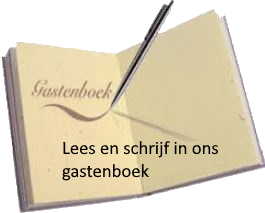What is a plaster cast?
OverviewWhat is a plaster cast?
A plaster cast consists of plastic plaster. The cast ensures that the legs remain in a spread position in case of hip dysplasia. The cast sits from the waist to the ankles and the crotch is left open for diaper space. The inside of the plaster is soft so that there is minimal irritation and the skin is not damaged. You cannot take off a plaster cast. If problems arise with the plaster cast, such as skin inflammation or pain, the plaster cast technician can solve this and apply new plaster if necessary. Sometimes there is a stick between the legs for reinforcement, which is not intended to lift your child. A plaster cast is usually applied for about 3 months.
How do I change my child with a plaster cast?
When wearing a plaster cast, it is important to change the diaper regularly. Avoid leaving the diaper on for too long. Keeping plaster clean is quite a job, especially on the inside. This is virtually impossible. There is no reason to replace the cast, this only happens in very exceptional situations, for example if the skin is inflamed.
You can keep the outside clean with a damp cloth. Try to prevent the plaster from getting wet on the inside. You can dry this with a hairdryer, not too hot, pay attention to that, or with paper tissues that you remove later. If feces or diarrhea get into the cast, clean it with wipes. Products against odors, Confort Aid and Nilodor are available at the pharmacy.
What should I keep in mind if my child is wearing a plaster cast?
You can cover any sharp edges with felt or terry cloth, which you can get in the plaster room or with a panty liner. If your baby suffers from colic, this is very difficult with a plaster cast, as they cannot straighten their legs, something they do when they get colic. Take a little longer to burp your baby after feeding. If the cramps become a problem, contact the doctor to obtain other nutrition or medication for cramps.
What clothing fits over a plaster cast?
Normal trousers do not fit over a plaster cast. With us you will find trousers and jumpsuits that fit over a plaster cast. The entire bottom can be opened to make changing a lot easier. They can also be used with plaster casts that have a stick between them.
Wearing pants over the plaster cast prevents the plaster from becoming dirty and it is more pleasant to have a child on your lap if he/she wears pants over it (with bare legs). Plaster is very hard and can feel sharp on your skin. It also looks better and does not immediately look so medical.
How do I lift my child with a plaster cast?
Never lift your child wearing a plaster cast only under his/her armpits, but also support the lower body. Lifting a child with a plaster cast is very heavy, it does not give way. What can help is a hip carrier, which is a carrying strap with a built-in seat so that you can carry your child more easily, the weight is evenly distributed.
What is the best way for my child to sit in a plaster cast?
Sitting in a plaster cast is not easy. Regular high chairs and bouncers often no longer fit. The hip dysplasia beanbag is an ideal seat for small children who cannot yet sit on their own. The baby seat can be filled with all kinds of very small granules. The granules make the beanbag mold to the body, which is particularly nice for children with plaster casts. The back and head are so well supported. Also very useful for feeding. If your child no longer needs the cast, you can also continue to use this beanbag as a regular beanbag.
For children who can sit on their own, special plaster cast chairs can be rented, the Krabat Jockey
How does my child sleep with a plaster cast?
We have special sleeping bags that fit children in plaster casts. They are extra wide and your baby stays nice and warm. It depends on how the cast is placed, but it may be more comfortable to place a rolled up towel under the legs for support so that the cast does not press into the back.





